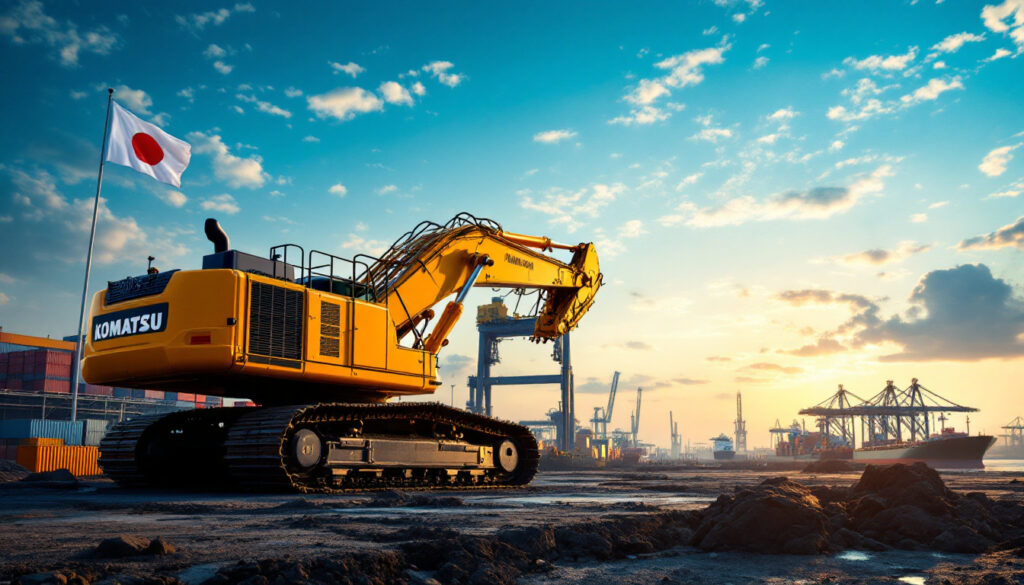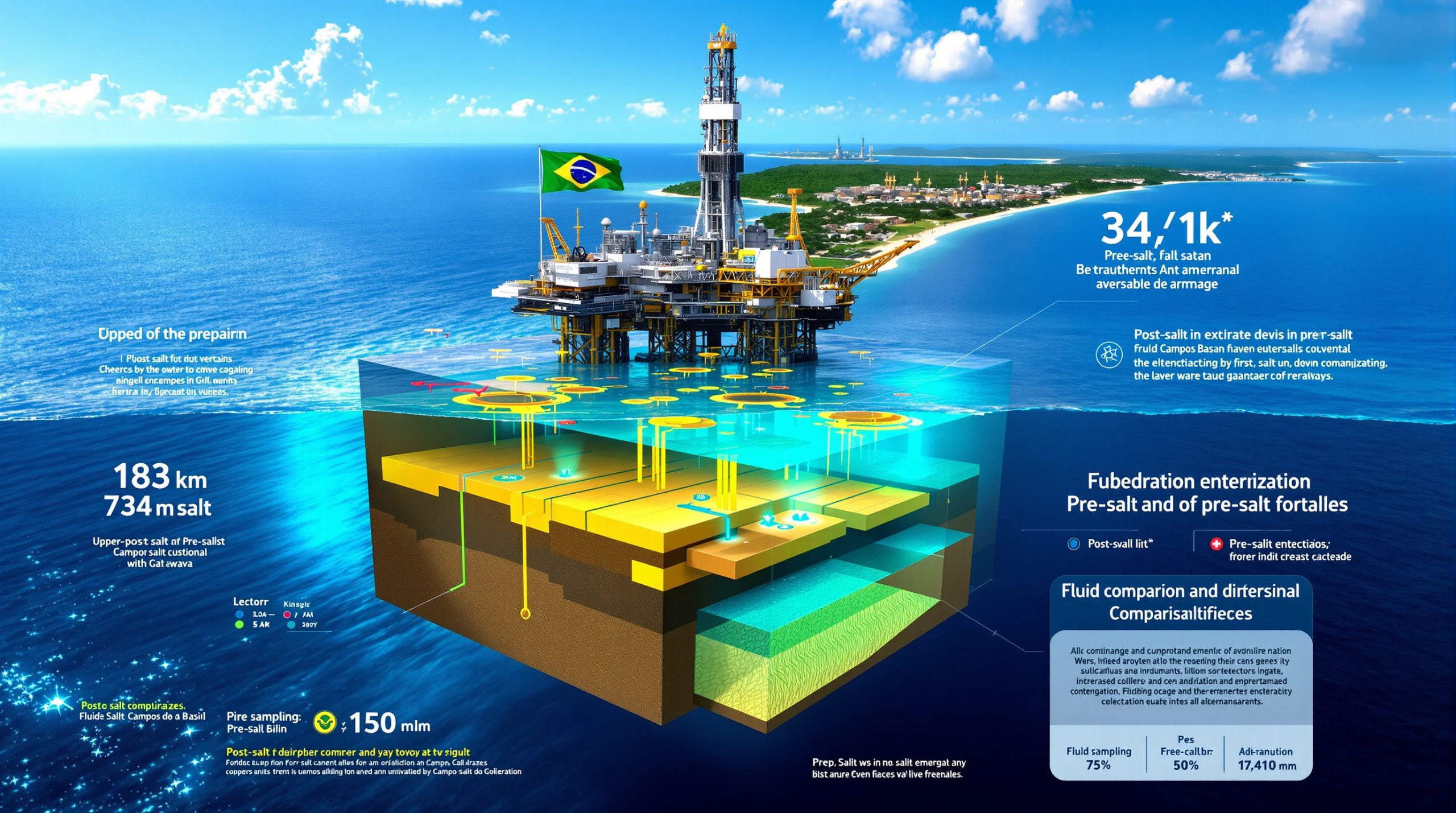How Will US Tariffs Impact Komatsu's Operations?
The imposition of US tariffs and a stronger yen have compelled Komatsu Ltd., the world's second-largest construction and mining equipment manufacturer, to evaluate significant price adjustments in its key North American market. The company projects a 27% decline in operating profit for the fiscal year, driven by a 140 billion yen ($976 million) annual cost increase from tariffs and a 78 billion yen net impact for the fiscal year ending March 2026 when accounting for inventory. With North America representing 25% of its global revenue, Komatsu's reliance on imports—approximately 50% of its US-bound equipment is manufactured in Japan and China—exposes it to escalating trade tensions.
CEO Takuya Imayoshi has proposed price hikes to mitigate these pressures, alongside a 100 billion yen share buyback and a strategic focus on resilient mining outlook 2025. This strategy reflects the company's multifaceted approach to navigating an increasingly complex global trade landscape while maintaining market competitiveness.
The Financial Impact of Tariffs on Komatsu
The direct financial repercussions of US tariffs on Komatsu are multifaceted. The company anticipates a 140 billion yen ($976 million) annual cost increase due to higher import duties, primarily affecting equipment manufactured in Japan and China. This figure adjusts to 78 billion yen for the fiscal year ending March 2026 after factoring in existing inventory, which currently stands at approximately five months' worth of products.
The stronger yen exacerbates these challenges by increasing the cost of repatriating overseas profits, further straining operating margins. Komatsu's fourth-quarter operating profit rose 24%, surpassing analyst estimates, but this short-term resilience may be undermined by prolonged Trump policies impact.
North America's contribution to Komatsu's revenue—25% in the last fiscal year—highlights the region's strategic importance. A sustained decline in profitability could force the company to reassess its supply chain investments and pricing strategies. The inventory buffer provides temporary relief, but reliance on imported components necessitates long-term structural adjustments.
Komatsu's US Market Exposure
Komatsu's supply chain structure leaves it vulnerable to retaliatory trade measures. Half of its US-destined products are manufactured in Japan and China, leaving 50% of its North American inventory susceptible to tariff escalations. While the company has preemptively factored potential Chinese retaliatory tariffs into its forecasts, the dual exposure to US-China trade tensions complicates risk mitigation.
As the second-largest player behind Caterpillar, Komatsu operates in a highly competitive market where price elasticity is critical. Raising prices risks eroding market share, particularly if competitors absorb costs or relocate production.
The geographic concentration of manufacturing also limits Komatsu's agility. Unlike Caterpillar, which has diversified production across the Americas and Europe, Komatsu's reliance on Asian factories intensifies its tariff sensitivity. This structural imbalance underscores the urgency of Imayoshi's price hike considerations.
What Strategies Is Komatsu Implementing to Offset Tariff Costs?
Price Adjustment Considerations
CEO Takuya Imayoshi's proposal to raise US prices reflects a calculated gamble to preserve margins without alienating customers. The construction and mining sectors, however, are notoriously cost-sensitive. Komatsu must balance incremental price increases against the risk of clients deferring equipment purchases or opting for competitors' products.
Historical precedents in the automotive and steel industries suggest that targeted price adjustments—coupled with enhanced financing options—can mitigate demand erosion. Komatsu's inventory levels provide a five-month runway to phase in price changes gradually. This buffer allows the company to avoid abrupt market dynamics insights while renegotiating supplier contracts and exploring localized production opportunities.
Nevertheless, the long-term viability of price hikes depends on concurrent cost-cutting measures and innovation in high-margin segments like autonomous mining equipment. The company faces the challenge of adjusting pricing strategies without compromising its competitive positioning in a market already under pressure from economic uncertainties.
Financial Countermeasures
In addition to pricing strategies, Komatsu has announced a 100 billion yen share buyback program to bolster investor confidence amid profit uncertainty. This move signals management's belief in undervaluation and aligns with broader corporate efforts to return capital to shareholders. The 24% surge in fourth-quarter operating profit, driven by robust mining equipment sales, offers a temporary reprieve.
Mining equipment demand, particularly in coal sectors supported by US policy, could offset tariff-related losses if sustained. The company's emphasis on mining aligns with Bloomberg Intelligence's analysis, which cites "resilient demand for mining equipment" as a stabilizing force.
By prioritizing this segment, Komatsu leverages its technological leadership in autonomous haulage systems and electric vehicles, which command premium pricing and lower tariff exposure due to localized component sourcing. This strategic pivot represents an attempt to capitalize on sectors where demand remains resilient despite broader economic challenges.
How Are Global Trade Tensions Affecting the Heavy Equipment Industry?
Industry-Wide Implications
The heavy equipment sector faces converging pressures from trade barriers, supply chain disruptions, and fluctuating commodity prices. Manufacturers with centralized production in tariff-targeted countries, such as China, are particularly vulnerable. Industry-wide cost inflation has prompted firms to explore near-shoring, though this transition requires substantial capital and time.
Komatsu's predicament mirrors challenges faced by rivals like Hitachi and Liebherr, which have also flagged margin compression from tariffs. Price increases, while unavoidable for some, risk triggering a cycle of inflationary adjustments across the industry. Smaller manufacturers lacking Komatsu's scale may face existential threats, accelerating consolidation.
Conversely, companies with diversified manufacturing footprints, such as Caterpillar, are better positioned to reroute production and minimize duty impacts. The disparity in tariff exposure among competitors may reshape competitive dynamics, potentially altering market share distributions in key regions like North America.
Market Outlook for Heavy Equipment
The mining sector's resilience offers a counterbalance to broader industrial weaknesses. US policy support for coal and critical minerals—a response to energy security concerns—has bolstered demand for mining machinery. Komatsu's strategic pivot toward mining equipment capitalizes on this trend, though reliance on coal contradicts global commodities insights and decarbonization efforts.
The tension between short-term profitability and long-term sustainability poses ethical and operational dilemmas. Bloomberg Intelligence notes that "price hikes and US support for coal could offset tariff impacts," but this optimism assumes stable commodity prices and policy continuity. A downturn in mining activity or a shift toward renewable energy sources could abruptly reverse these gains.
Equipment manufacturers must navigate these conflicting trends while maintaining sufficient flexibility to adapt to rapidly changing market conditions. The industry's future trajectory will likely be shaped by a complex interplay between trade policies, technological innovation, and shifting energy priorities.
FAQs About Tariffs and the Heavy Equipment Industry
How Do Tariffs Affect Equipment Pricing for Mining Operations?
Tariffs directly increase the landed cost of imported machinery, which manufacturers often pass on to customers. For mining companies, this elevates capital expenditures, potentially delaying fleet upgrades or extending the lifespan of existing equipment. Komatsu's price hikes, while mitigating its own cost pressures, could constrain miners' profitability, particularly in low-margin sectors like coal.
The ripple effects extend beyond immediate price increases, potentially altering equipment lifecycle management strategies and maintenance practices. Mining operations may increasingly prioritize equipment durability and repair capabilities over replacement, affecting long-term demand patterns for new machinery.
What Percentage of Komatsu's US Equipment Is Manufactured Overseas?
Approximately 50% of Komatsu's US-bound equipment is produced in Japan and China, exposing half its North American inventory to tariffs. This dependency contrasts with competitors like Caterpillar, which manufactures 70% of its US-sold equipment domestically.
Komatsu's manufacturing footprint reflects historical investment decisions and specialized expertise in certain facilities, making rapid readjustment challenging. The company's vulnerability to tariffs is directly proportional to its reliance on cross-border supply chains, highlighting the strategic importance of geographic diversification in manufacturing operations.
How Do Equipment Manufacturers Typically Respond to Tariffs?
Manufacturers employ a mix of price increases, supply chain restructuring, and lobbying for exemptions. Komatsu's approach—combining pricing adjustments with share buybacks and market segmentation—reflects a hybrid strategy aimed at balancing stakeholder interests amid uncertainty.
Other common responses include accelerating automation to reduce labor costs, vertically integrating critical component production, and strategically reallocating global production capacity. The effectiveness of these strategies varies based on a company's scale, product diversity, and existing manufacturing infrastructure.
Conclusion
Komatsu's response to US tariffs underscores the intricate interplay between global trade policy and corporate strategy. While price hikes and financial maneuvers offer near-term relief, long-term resilience hinges on supply chain diversification and innovation in less tariff-exposed sectors.
The heavy equipment industry's trajectory will be shaped by evolving trade dynamics, commodity cycles, and geopolitical investor strategies, requiring agility and foresight from market leaders like Komatsu. As tariff pressures persist, companies that successfully balance pricing power, manufacturing flexibility, and technological innovation will emerge better positioned to weather continued trade uncertainties.
The company's consideration of price increases represents just one aspect of a multifaceted strategy necessary to navigate an increasingly complex global trade environment. Komatsu's ultimate success will depend on how effectively it can implement these strategies while maintaining competitive positioning in key markets like North America.
Want to Stay Ahead of Major Mining Discoveries?
Discovery Alert's proprietary Discovery IQ model delivers instant notifications when significant mineral discoveries are announced on the ASX, helping investors capitalise on opportunities before the broader market. Explore historic returns from major discoveries and begin your 30-day free trial at Discovery Alert's discoveries page today.




